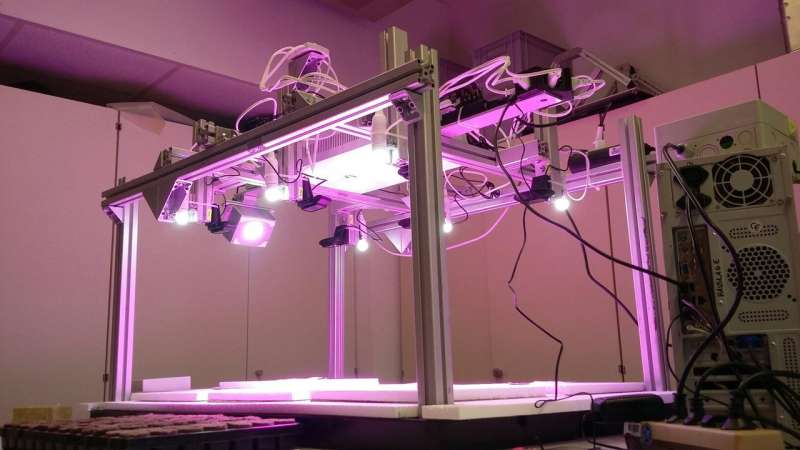Scientists use computer vision and machine learning to predict plant growth

A group of scientists from the Space Center (SC) and the Center for Data-Intensive Science and Engineering (CDISE) at Skoltech have developed a method for predicting an increase in plant biomass using 2-D and 3-D images. Their findings will help improve the efficiency of precision farming, both on Earth and in space. The results of their research were presented at the IEEE Instrumentation and Measurement Technology Conference and accepted for publication in a special issue of IEEE Pervasive Computing.
With the rising global population, pervasive agriculture research is highly relevant. High technology opens up broad horizons for combating hunger in developing countries, enhancing food security, mitigating human impact on the environment and making agriculture more cost-effective.
Optimized use of resources is among the many challenges that pervasive agriculture is up against in attaining these goals. Accurate predictive models capable of predicting plant growth and optimizing production are an absolute necessity in this context. Unfortunately, the empirical models that describe an increase in biomass as a function of different factors have several weak points, including a limited scope of application and a great multitude of parameters that require long and expensive measurements. By contrast, the universal models that display fairly high accuracy are an indispensable tool for a wide range of applications ‒ from open-field agriculture and highly efficient greenhouse farms with crop growth monitoring capability to artificial life support systems for space stations.
Professors Rupert Gerzer, Tatiana Podladchikova and Andrey Somov, and Skoltech Ph.D. student Dmitry Shadrin, have developed a method for predicting plant growth in an artificial environment. As the first step, they collected statistics by measuring plant growth in an artificial soilless system using a 3-D camera and established a relationship between the increase in the total biomass and the expansion of the total surface area of the leaves. Then they captured the increase in the total leaf area using a 2-D camera and built a dynamic plant growth model based on these measurements.
The key distinguishing feature of the new method is that the data are collected using both 3-D and 2-D cameras ‒ an approach that obviates the need for time-consuming multi-parameter calculations. The leaf area and plant biomass data, coupled with an efficient mathematical model, produce accurate results.
The scientists conducted their experiment using a specifically designed automatic system with artificial growth capability, 2-D and 3-D cameras, and environment sensors. The system relies heavily on machine learning to model plant growth and predict its dynamics. Over 10,000 images were processed in the course of the experiment. The study laid the groundwork for the plant growth optimization pilot project currently underway on a high-tech experimental greenhouse farm of the Michurinsk State Agrarian University. Its first successes were reported in a paper which has already been accepted for publication in the IEEE Pervasive Computing journal. Currently, recommender systems are being developed for the optimization of greenhouse farms based on the project outputs and machine learning algorithms.
"The key strength of our method is that it's enough to get 3-D images of each plant species only once. Then you can predict the biomass growth in greenhouses using the simplest cameras. This helps create much simpler and cheaper prediction, monitoring and optimization systems for greenhouses and artificial life support systems," says the main author of the study Dmitry Shadrin.
"The desire to live in harmony with the world around us is the main driver for getting to the bottom of the observed phenomena, understanding their behavior and predicting the future course of events," said Tatiana Podladchikova, professor at the Skoltech Space Center.
"Observation and experiment are the pillars of our knowledge about the world. Skoltech Ph.D. student Dmitry Shadrin completed a unique soilless cultivation experiment with tomatoes and lettuce. The new findings made in this experiment and the efficient data analysis and biomass growth prediction methods make a valuable contribution to the development of autonomous life support systems for use in space and on Earth," she explained.
More information: Shadrin, D., A. Somov, T. Podladchikova, and R. Gerzer. "Pervasive Agriculture: Measuring and Predicting Plant Growth Using Statistics and 2D/3D Imaging." In 2018 IEEE International Instrumentation and Measurement Technology Conference (I2MTC), 1–6, 2018. DOI: 10.1109/I2MTC.2018.8409700
Provided by Skolkovo Institute of Science and Technology


















